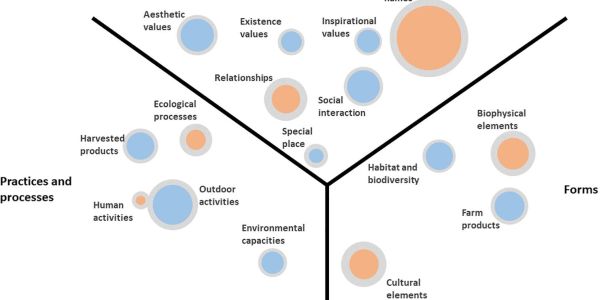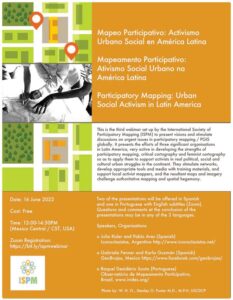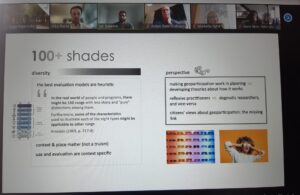Multi-sensory PPGIS combining the qualities of soundscape research and landscape values mapping.
Public participation GIS methodology has been mainly used to map the social values and behaviour patterns of users in city and neighbourhood levels. However, very little attention is paid to the role of different sensory systems in the perception and the embodied experience of place. The new paper by Korpilo et al. (2023) addresses this gap by integrating the soundscapes and landscape values of urban green infrastructure in two neighbourhoods in Helsinki, Finland.
The paper develops, tests and validates a Multi-sensory Public Participation GIS (MSPPGIS) method combining the qualities of soundscape research and landscape values mapping. The analysis consisted of hotspot mapping, spatial overlap assessment and compatibility analysis showing the level of spatial compatibility between positive landscape values and positive and negative soundscapes (see Figure below). Results indicated very low to low spatial overlap between the different landscape values and pleasant/unpleasant sound hotspots, suggesting that landscape values do not necessarily reflect sonic perception of urban green and blue spaces. Pleasant and unpleasant sounds were located closer to home than landscape values, indicating that respondents’ soundscape ‘cognitive map’ is smaller in spatial range.
The MSPPGIS method enables the elicitation of a more dynamic and diverse set of sounds compared to previous soundscape mapping which tend to focus on ‘noise’ instead of multiple experiences of different sounds. Also, the combination of landscape values and soundscapes in MSPPGIS provides for a more integrated assessment of ‘where’ and ‘how’ to design urban green infrastructure.

Check out the paper: Korpilo, S., Nyberg, E., Vierikko, K., Nieminen, H., Arciniegas, G., & Raymond, C. M. (2023). Developing a Multi-sensory Public Participation GIS (MSPPGIS) method for integrating landscape values and soundscapes of urban green infrastructure. Landscape and Urban Planning, 230. doi.org/10.1016/j.landurbplan.2022.104617



